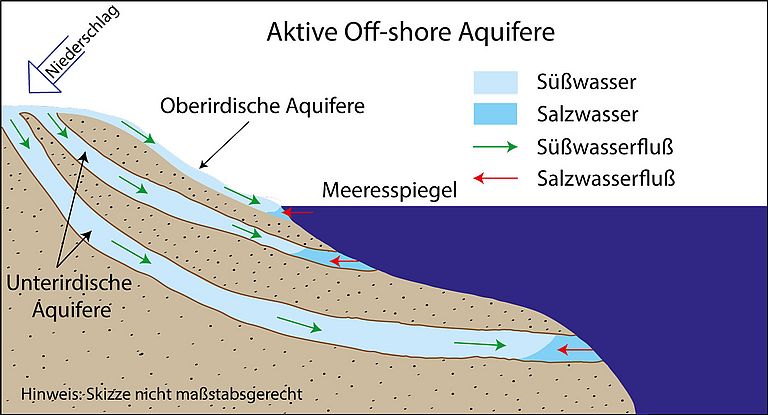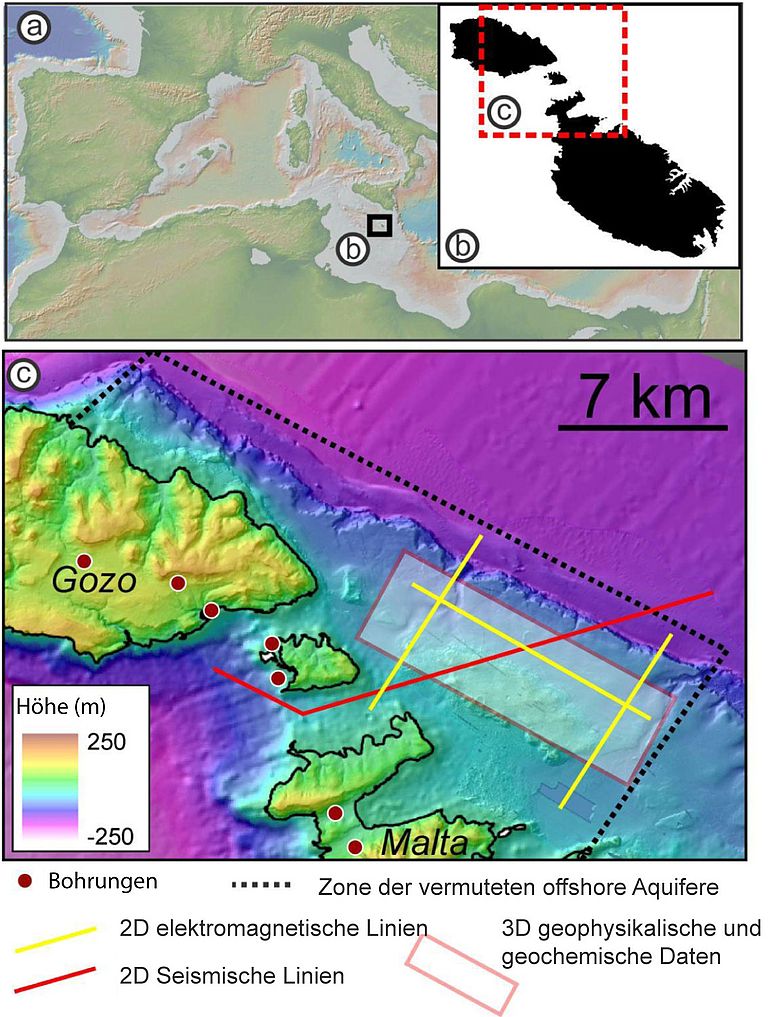Search for Groundwater in the Ocean
New German-Maltese Research Project started
Groundwater resources in the Maltese Islands and the Mediterranean Sea are facing enormous stress caused by population growth, increased pollution, and climate change. Offshore aquifers (OAs), which are freshwater bodies below the seabed, have been proposed as an alternative source of freshwater to relieve water scarcity in coastal regions. However, there are a number of issues that need to be addressed before OAs may be used sustainably. These include a lack of understanding of the location, geometry and evolution of OAs, and their connectivity with onshore aquifers.
Recent studies have estimated theglobal volume of OAs is in the order of 5 x 105km3. This estimate is two orders of magnitude greater than what has been extracted globally from continental aquifers since 1900 (4.5 x 103km3). Since submarine groundwater can be exploited with technology from the oil and gas industry and onshore groundwater exploitation, and because the costs seem to be economically competitive with desalination, OAs have the potential to become an important resource that can relieve water scarcity and mitigate the adverse effects of groundwater depletion in densely populated coastal regions.
The project Sustainable MAnagement of offshoRe groundwaTer resources (SMART), operated jointly by GEOMAR Helmholtz-Centre for Ocean Research Kiel and the University of Malta, is a three-year project that will focus on the Maltese Islands as a case study to develop a best practice guide to detect, characterize and monitor OAs, and to predict how OAs change in response to extraction and climate change.
SMART is based on a number of cooperation and capacity building activities, which include advanced training schools, exchange programmes, mutual participation in advisory bodies, organization of joint sessions at international conferences, and joint scientific publications.
SMART is one of three projects selected for funding by the Helmholtz Association’s Initiative and Networking Fund for European Partnering, which is a new funding programme that supports co-operation between Helmholtz centres and research institutions in south, central and eastern Europe. When congratulating the SMART team researchers, the adjudicating panel said it was very impressed with the project proposed and that it represents an intriguing and highly relevant research topic, carried out by an enthusiastic team, and embodying the ‘European Partnering’ spirit perfectly, with benefits and value added for both sides clearly visible.
“SMART will advance our understanding of how OAs function, and will provide the technology and methodology to assess if there are OAs in any given offshore area and to determine if and how these may be used sustainably. This multidisciplinary project will entail an integration of innovative concepts and techniques from terrestrial and marine geology, geochemistry, geophysics, and hydrogeology to reach the project objectives”, adds Dr. Bradley Weymer, project coordinator from GEOMAR.
“SMART is unique opportunity to bring a step change in marine research in the Maltese Islands and build capacity in this field”, says Professor Aaron Micallef from the Marine Geology & Seafloor Surveying group, Department of Geosciences of the University of Malta. “UM scientists will be trained by, and publish jointly with, eminent scientists from GEOMAR, on a theme that is important to UM, Malta as a country, as well as Europe in general”.
Image in High resolution (english version):
Schematic of submarine aquifers. Graphics: B. Weymer, GEOMAR.
Study area off the coast of Malta. Graphics: B. Weymer, GEOMAR.
Contact:
Dr. Andreas Villwock (GEOMAR, Communication and Media), Phone: +49 0431 600-2802, presse(at)geomar.de




